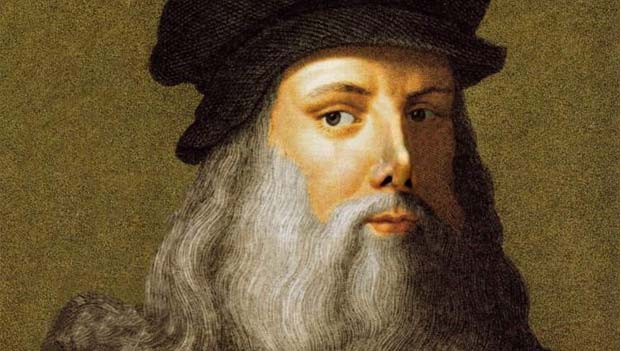Here is another great artist from history. Leonardo Da Vinci (Leonardo di ser Piero da Vinci) is an Italian Renaissance polymath, painter, sculptor, architect, musician, scientist, mathematician, engineer, inventor, anatomist, geologist, cartographer, botanist, and writer lived between 1452-1519. He is also one of the most known humanist of all time. Leonardo was born in the small town of Vinci, in Tuscany, near Florence. He was the son of a wealthy Florentine notary and a peasant woman. He got his start as an artist around 1469, when his father apprenticed him to the fabled workshop of Verocchio.
His mastery of various disciplines and innovative techniques contributed significantly to the development of the Renaissance art movements. In this article, we will take a closer look at 10 of the most famous Leonardo da Vinci artworks, delving into the history, significance, and impact of these renowned Renaissance paintings.
I have selected 10 Most Famous Leonardo Da Vinci Artworks for you…
10 – Portrait of Ginevra de’ Benci (1474-1476)
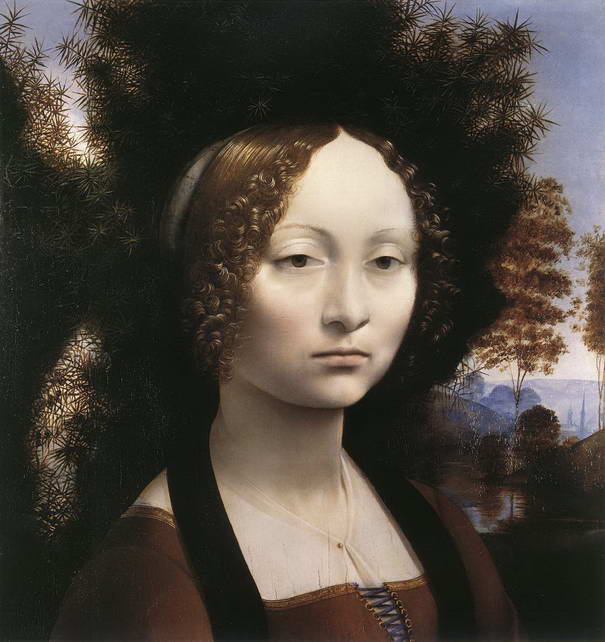
Portrait of Ginevra de’ Benci is now owned by National Gallery of Art, Washington, DC and is currently the only painting by Leonardo in United States. Unlike Leonardo’s other portraits of women, this lady looks sulky, unforgiving and haughty. This is emphasised by the slightly smaller cast of one eye, making her look withdrawn.
09 – Lady with an Ermine (1489–1490)
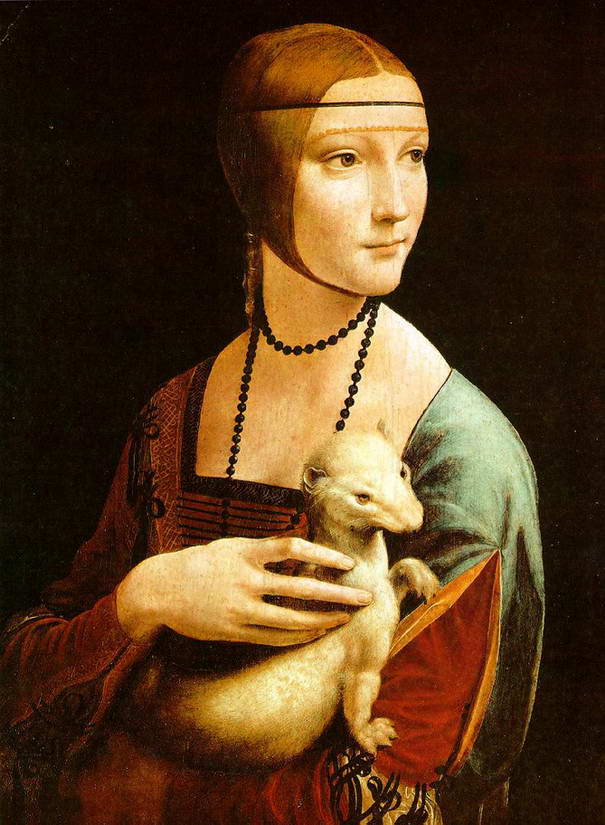
Painted around 1489-1490, Lady with an Ermine features Cecilia Gallerani, the mistress of Ludovico Sforza, the Duke of Milan. The portrait showcases Leonardo’s exceptional talent for capturing the subtleties of human expression and his keen attention to detail. The ermine in Cecilia’s arms symbolizes purity and serves as a clever play on her last name, which is derived from the Greek word for ermine.
08 – The Virgin and Child with St Anne (1510)
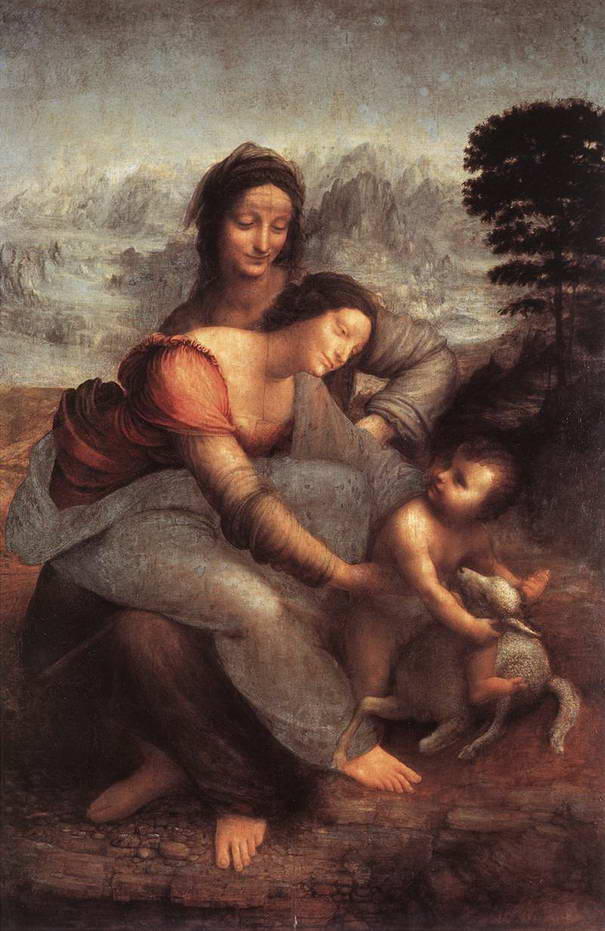
The Virgin and Child with St Anne was painted by Leonardo Da Vinci on 1510. It is Oil on wood and measures 168 x 130 cm. The original one is now located at Musée du Louvre, Paris.
07 – St. John the Baptist (1513-16)
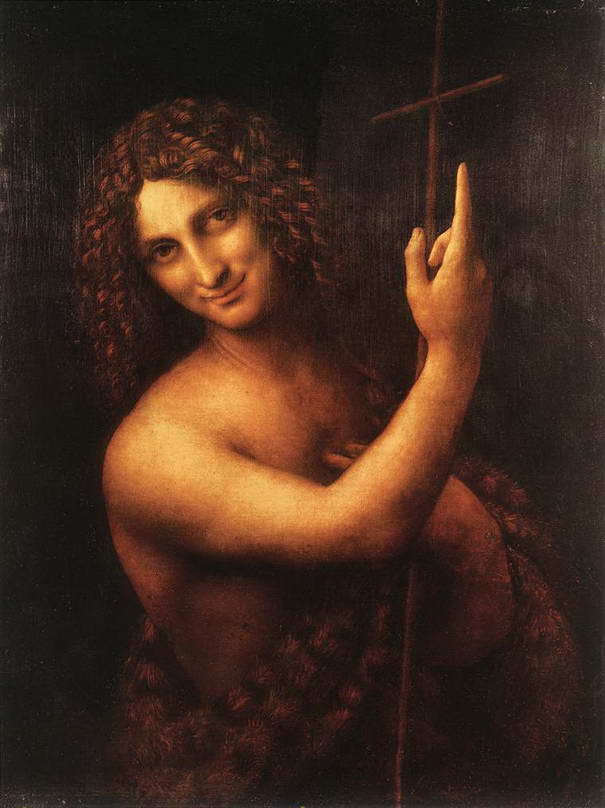
Painted between 1513 and 1516, Saint John the Baptist is one of Leonardo’s last works. The enigmatic figure, depicted with a soft smile and subtle use of chiaroscuro, echoes the style of the Mona Lisa. The painting portrays John the Baptist pointing towards the heavens, symbolizing his role in proclaiming the coming of Christ.
06 – Madonna of the Carnation (1478-80)
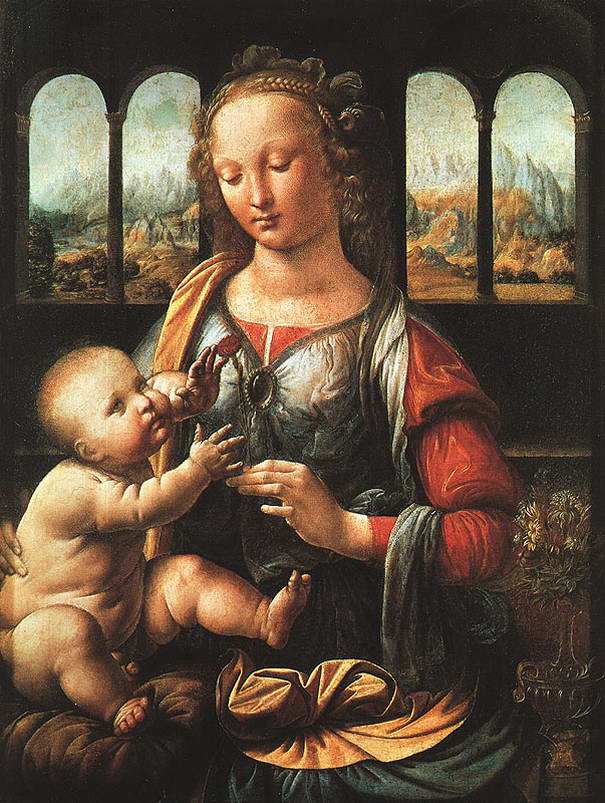
Created around 1478-1480, the Madonna of the Carnation is an exquisite example of Leonardo’s early religious paintings. The artwork features the Virgin Mary tenderly holding the infant Jesus, who reaches out to touch a delicate carnation in her hand. The carnation symbolizes the Passion of Christ, foreshadowing his eventual crucifixion. Leonardo’s expert use of light and shadow, as well as his keen observation of human emotions, elevates this intimate scene into a timeless masterpiece. The painting showcases the artist’s evolving style and his ability to capture the beauty of both divine and human forms.
05 – Virgin of the Rocks (1483-1486)
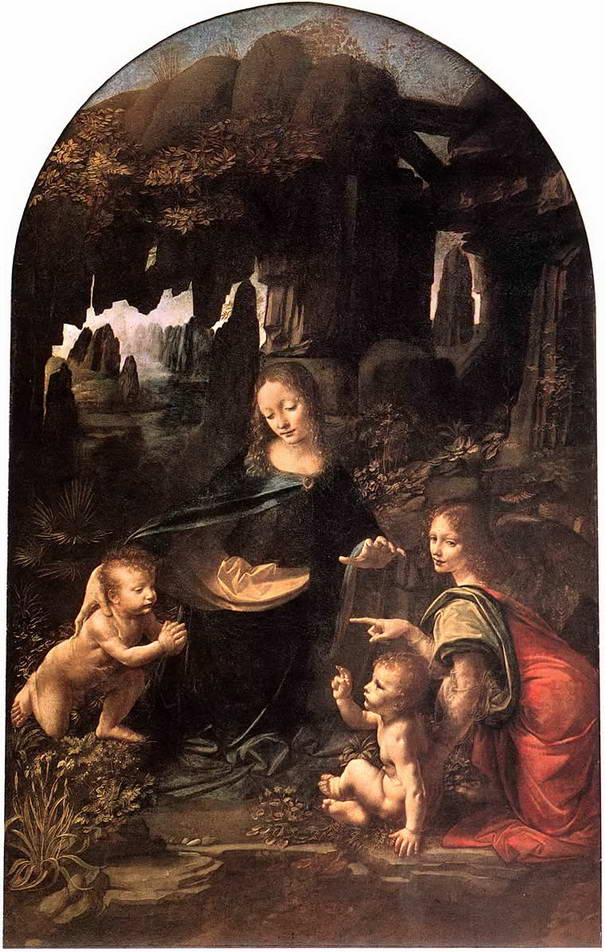
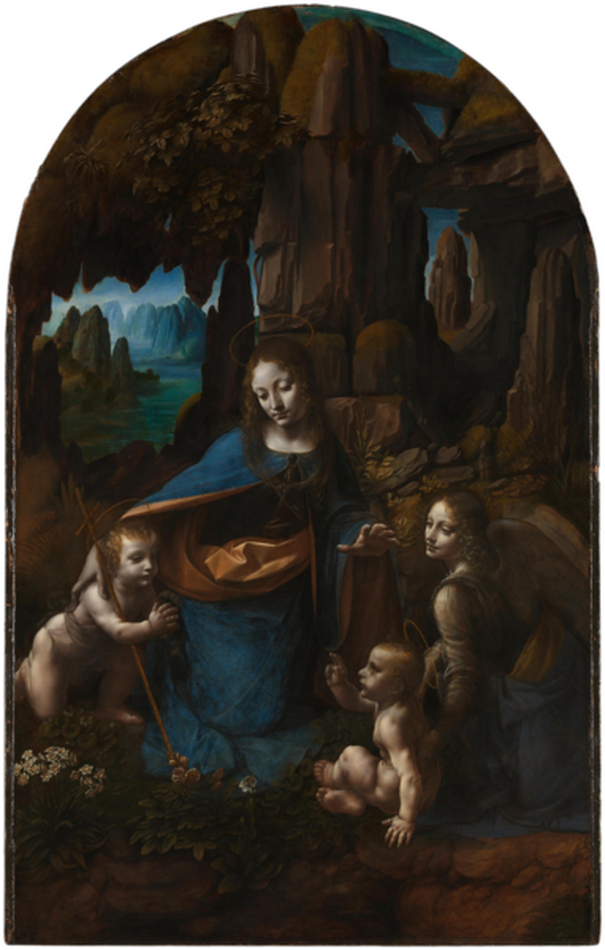
Leonardo painted two versions of The Virgin of the Rocks, one in 1483-1486 and the other in 1495-1508. The artwork features the Virgin Mary, the infant Jesus, John the Baptist, and an angel amidst a rocky landscape. Leonardo’s use of chiaroscuro, the contrast between light and dark, creates a sense of depth and three-dimensionality in the scene. The Virgin of the Rocks is a stunning example of Leonardo’s ability to seamlessly blend figures with their natural surroundings.
04 – Baptism Of Christ (c. 1472)
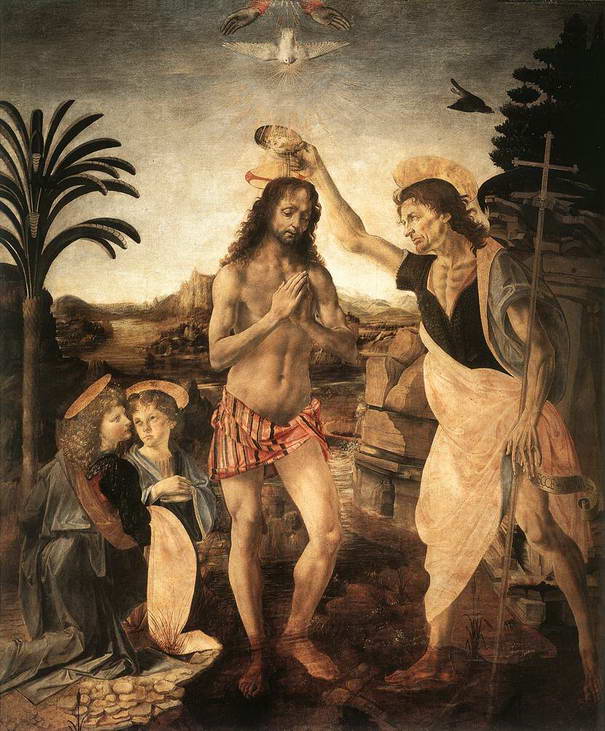
Created between 1472 and 1475, The Baptism of Christ is a collaborative piece between Leonardo and his mentor, Andrea del Verrocchio. The artwork depicts the biblical scene in which John the Baptist baptizes Jesus in the River Jordan. Leonardo is believed to have painted the angel on the left and the landscape in the background, showcasing his early mastery of naturalism and atmospheric perspective.
03 – The Adoration of the Magi (1481)
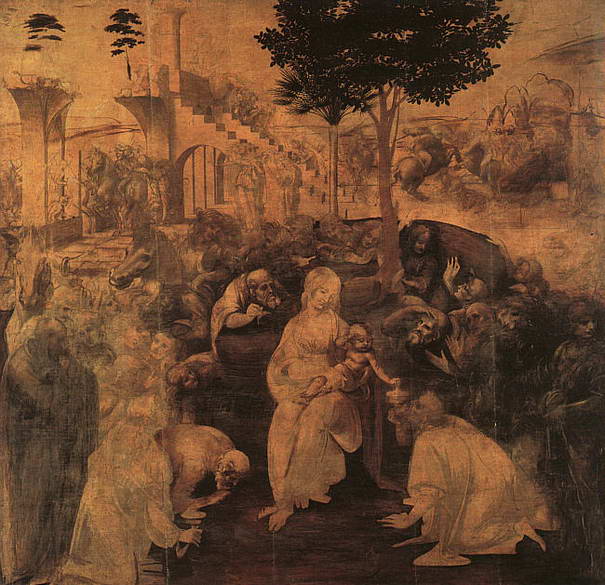
Commissioned in 1481, The Adoration of the Magi is an unfinished piece that offers insight into Leonardo’s creative process. The painting portrays the biblical scene of the Magi presenting their gifts to the infant Jesus, held by the Virgin Mary. The dynamic composition and intricate details hint at the potential masterpiece it could have been, had it been completed.
02 – The Last Supper (1498)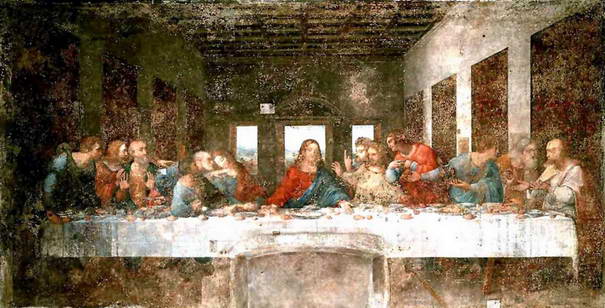
This iconic mural, created between 1495 and 1498, depicts the final meal Jesus shared with his disciples before his crucifixion. The Last Supper captures the dramatic moment when Jesus reveals that one of his followers will betray him. Leonardo masterfully conveys the emotions of shock, disbelief, and sadness through the disciples’ expressions and body language. The innovative use of linear perspective and vanishing points adds depth and realism to the composition.
01 – Mona Lisa (La Gioconda) (c. 1503-05)
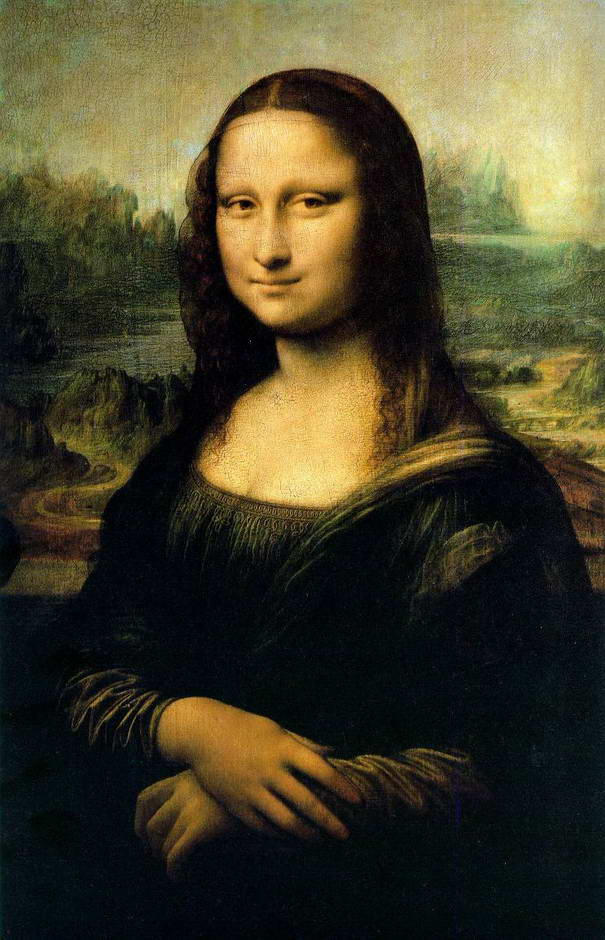
Arguably the most famous painting in the world, the Mona Lisa showcases Leonardo’s unparalleled skill in capturing the essence of human emotion. The enigmatic smile of the subject, Lisa Gherardini, has puzzled art historians and enthusiasts for centuries. Painted between 1503 and 1506, the Mona Lisa is a prime example of Leonardo’s sfumato technique, which involves the subtle blending of colors to create a soft, hazy effect.
The incredible talent and innovation of Leonardo da Vinci have earned him a place among the greatest artists in history. His works, from the iconic Mona Lisa to the captivating Last Supper, continue to inspire and intrigue audiences today. As we explore these ten most famous Leonardo da Vinci artworks, we gain a deeper appreciation for the creative genius that shaped the course of the Renaissance art movements and forever changed the world of art.


